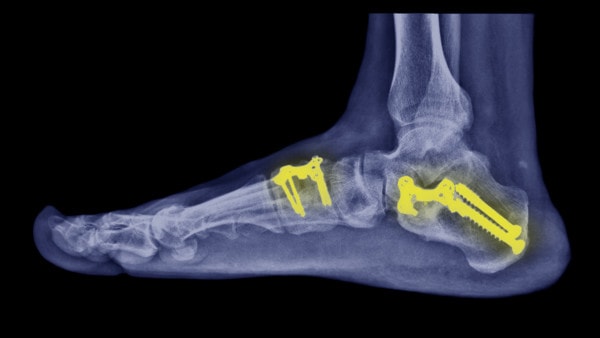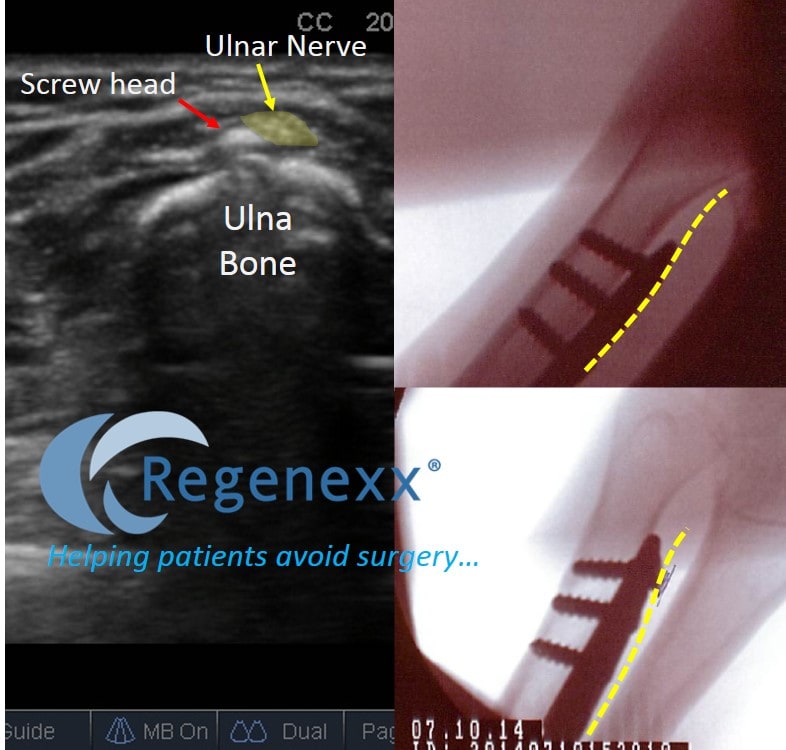Foot Fusion Complications and Wrist Surgery Side Effects: A Tale of Two Screws…
If you’re concerned about foot fusion complications or wrist surgery side effects…read on. This week I evaluated two patients who have been regrettably bitten by the big complications associated with big orthopedic surgery procedures. Both back to back patients had an issue with a screw placed to electively fuse an area in hopes of relieving pain and both ended up with life changing complications because of those screws. As a result, I call this post, a tale of two screws.

Joel Bubble Ben/Shutterstock
The concept that fusing bones together or changing bony anatomy will help patients recover from pain is becoming increasing popular in orthopedic surgery. Obviously, anytime you place screws and plates to fuse an area or reshape a bone that’s been shortened, big complications can ensue. Initially it amazes me that patients sign up for many of these surgeries, but not when I think hard about the uncomfortable position in which they find themselves. They’re in pain and without hope and a physician says what’s described as a simple surgery can “fix” the problem. The patient signs up I think because there’s a societal gestalt left over from the miracles of open heart surgery in the 1960s and 70s that surgery can “fix” problems. Regrettably, as these two patients found out the hard way, reality is often quite different.
The first patient I evaluated had mid-foot pain. She was told she had severe arthritis and the only fix would be to “fuse the area” The concept was that if the arthritic joints hurt with movement, then the pain could be eliminated by bolting them together and “fusing” the bones solid, thus eliminating the movement. However, after the surgery she noted a new problem that was as bad as her mid-foot pain – new nerve pain shooting from her foot to her big toe. As I examined the area with ultrasound between the toes, I saw the end of a screw (see image on top above)! Since there was little doubt that I was seeing a man made object right where the nerve that goes to her big toe lives, I examined the foot with a C-Arm fluoroscope (x-ray) and took the image on the bottom above. Looking at the foot x-ray, the first thing that hit me was that it looked like a trip to a hardware store that had ended badly. However, focusing in on the area between the first and second toe bones, there was the screw I had seen that was jutting outside the bone. This was definitely not where it should be (it’s only proper location would be in the foot bone). So we now had a reason for why she has nerve pain to her big toe! A screw is irritating or damaging the nerve as she moves and walks.
The second patient was seen the next day and was my second experience with a screw in as many days. This time the woman had wrist pain many years ago due to work. After conservative care like PT and steroid injections failed (but before she had tried any advanced biologic care), she made her way to see a surgeon. The solution proposed was to shorten her ulna bones to reduce pressure on the wrists. Yes, it sounds barbaric, but many of these surgeries are done each year without good evidence to show these very invasive procedures work. Shortly thereafter, the patient got into a car wreck with her hands on the steering wheel. After conservative care again failed to relieve her pain, she was signed up for surgery number two after an MRI showed a TFCC tear. The TFCC is a piece of cartilage like meniscus tissue that lives on the outside of the wrist and allows greater wrist motion so you can better use your thumb. This time the goal was to take out some bone (an osteotomy), some nerve (a neurotomy), and operate on the TFCC tear (a debridement). After the second surgery she developed CRPS, a nasty nerve syndrome where the hand becomes basically useless. I started by following up the ulnar nerve on the outside of the wrist with ultrasound imaging as many of her complaints seemed related to this nerve. About 1/3 of the way up toward her elbow, I saw what looked like a screw head sitting right next to this branch of the ulnar nerve (see left image above)! I then examined the wrist under fluoroscopy (we needed to get her wrist in a strange position to get the right image), which showed the screw poking out of the top of the plate and the plate raised off the bone. Since she had a nerve injury type CRPS, this is the most likely explanation for her new problem, a screw head irritating or damaging the ulnar nerve.
The upshot? My biggest concern with both of these surgeries is two fold. First, they were both elective and performed for pain relief, but ended up likely doing more damage then they helped relieve pain. Big surgeries mean big complications-which is why we prefer to use autologous biologics and interventional orthopedics (precise needle based procedures under guidance) instead of surgery. Second, patients desperately need to do their homework before signing up for big procedures to fix pain!

NOTE: This blog post provides general information to help the reader better understand regenerative medicine, musculoskeletal health, and related subjects. All content provided in this blog, website, or any linked materials, including text, graphics, images, patient profiles, outcomes, and information, are not intended and should not be considered or used as a substitute for medical advice, diagnosis, or treatment. Please always consult with a professional and certified healthcare provider to discuss if a treatment is right for you.

